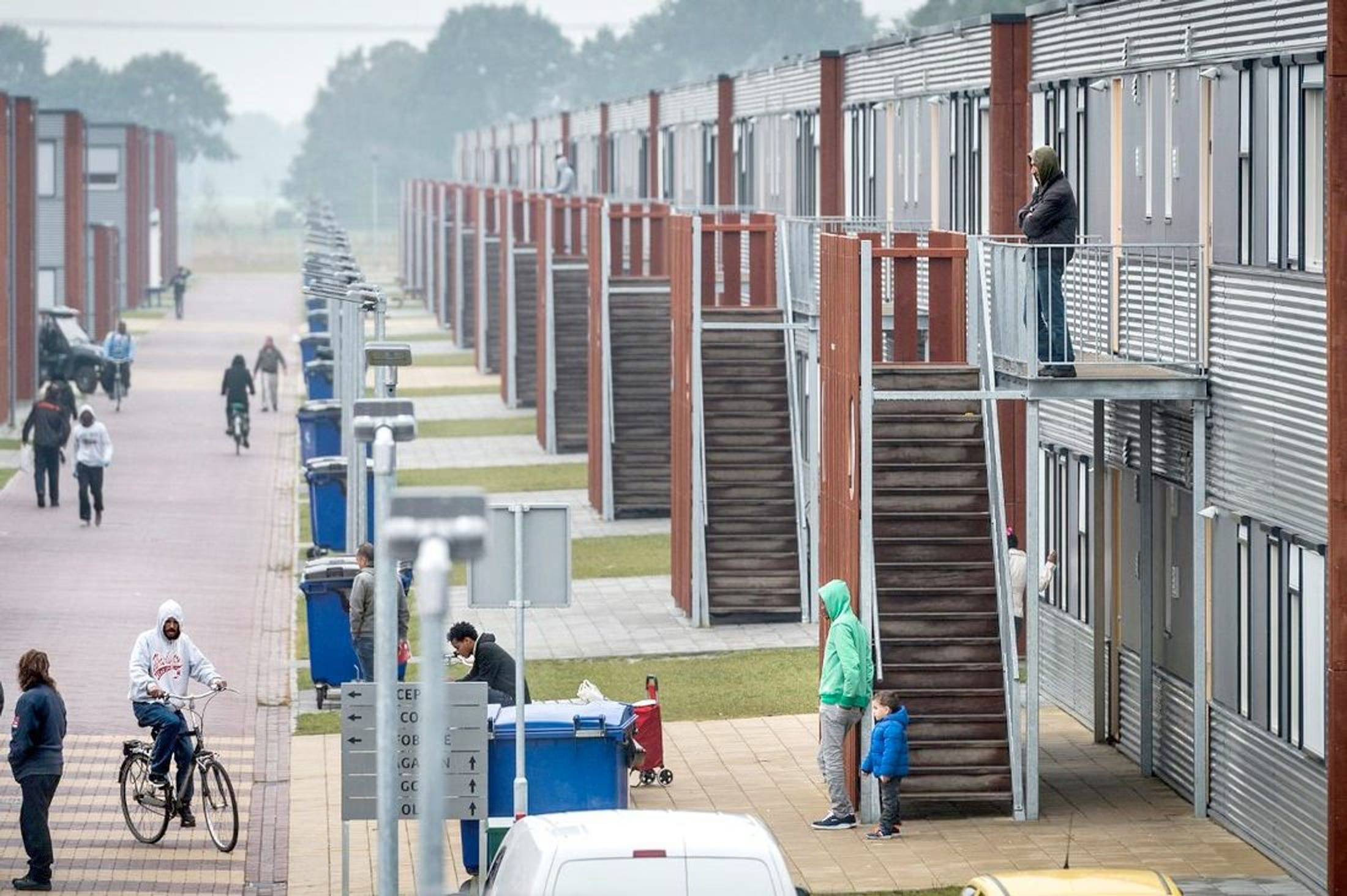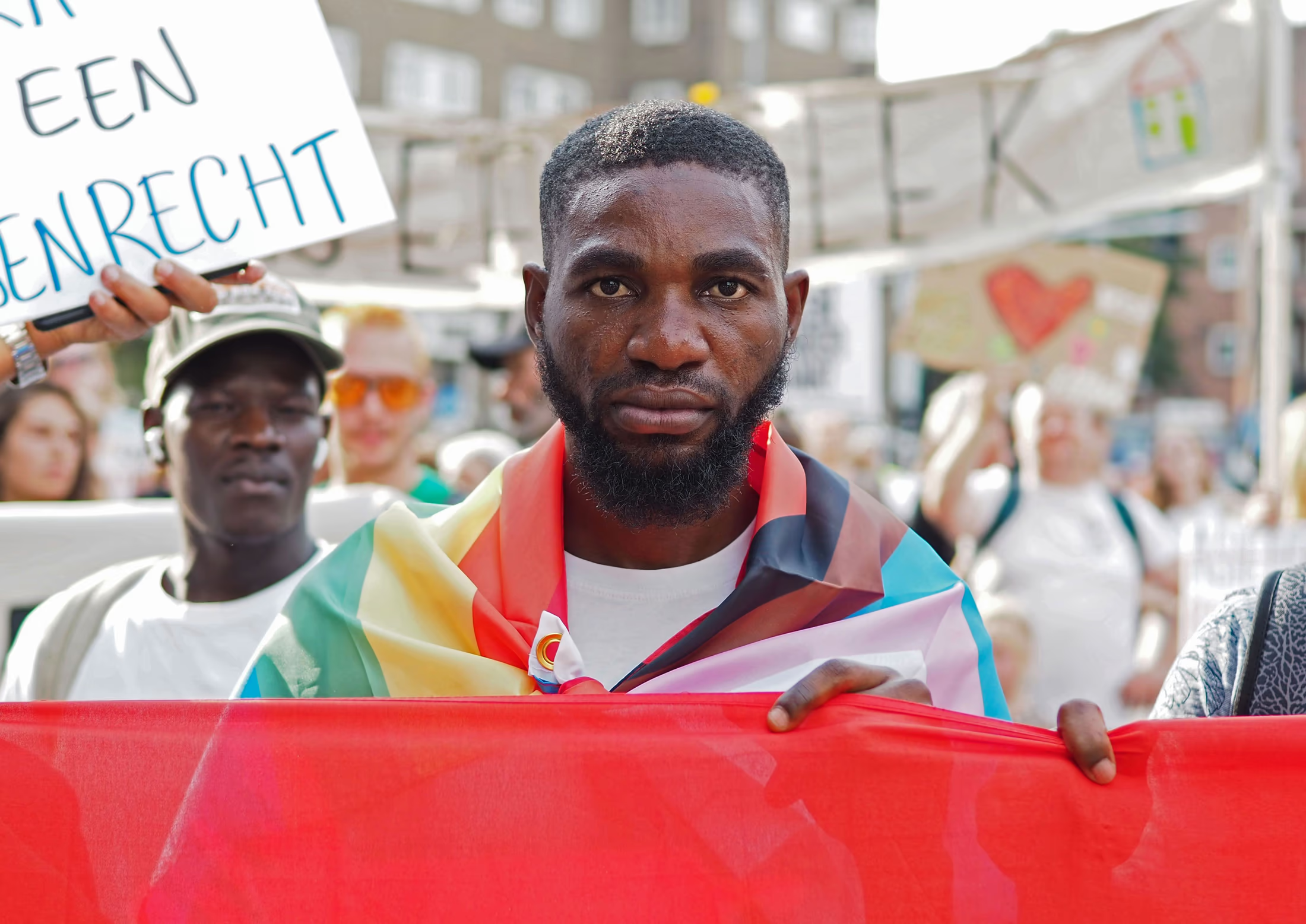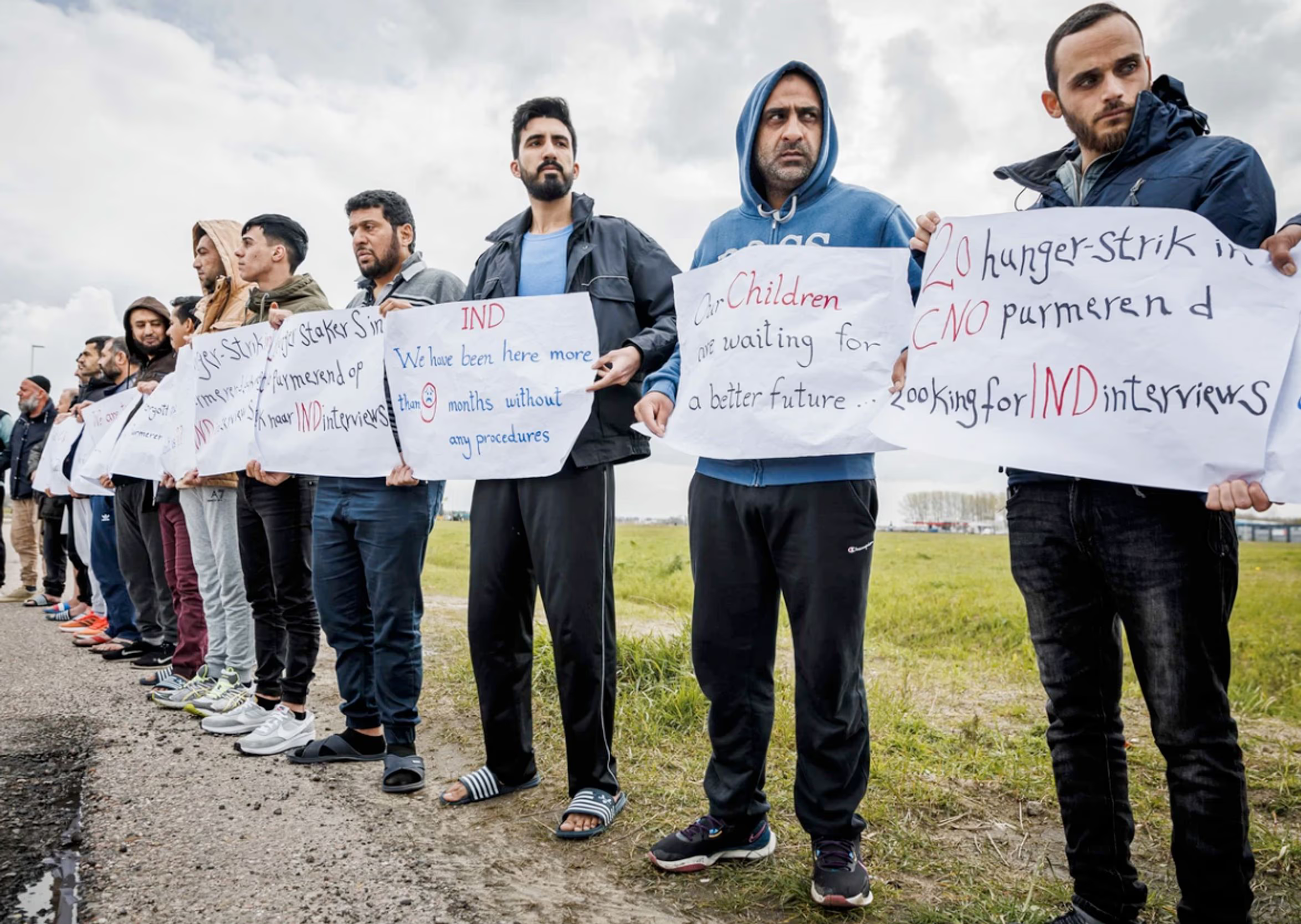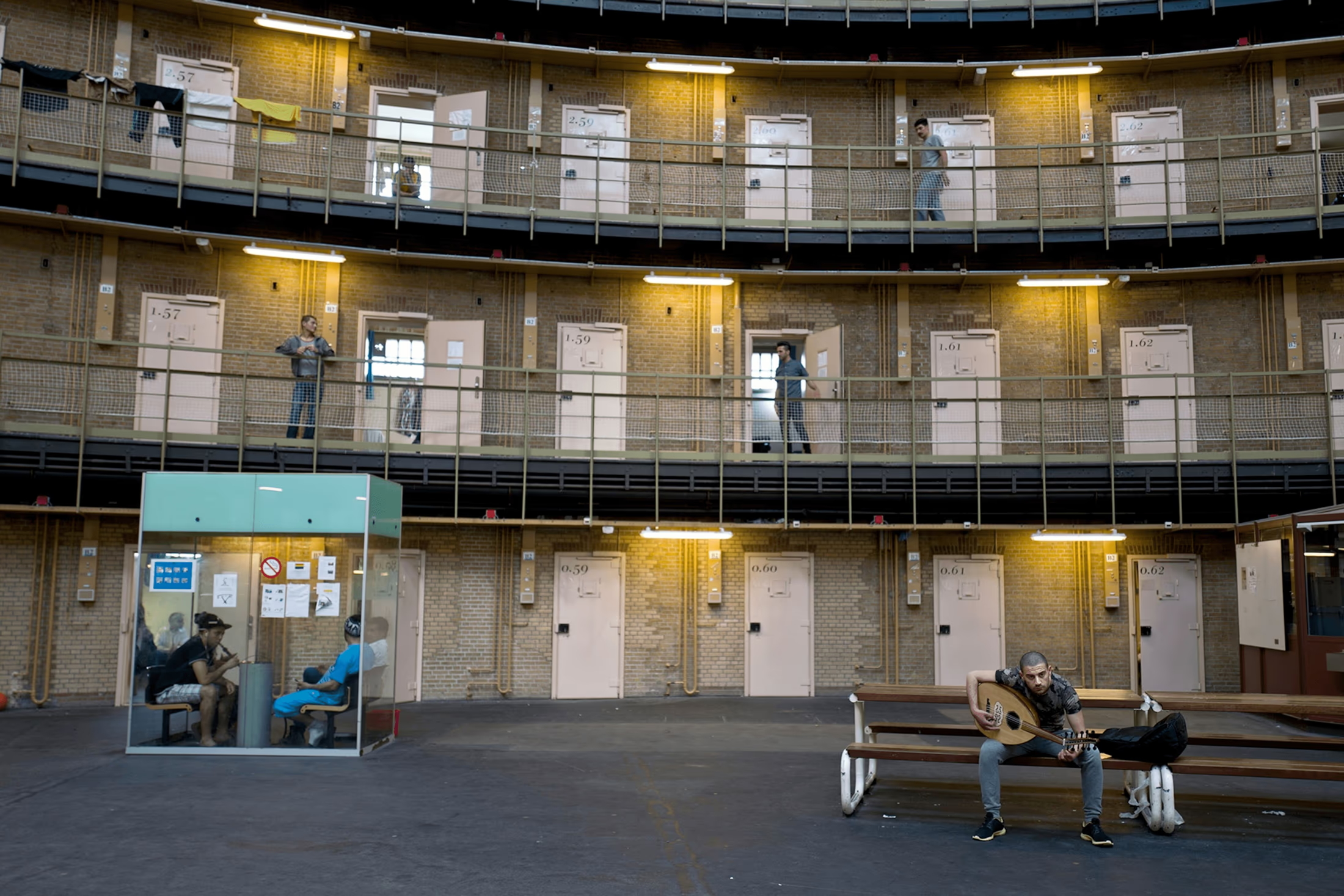In June, the Dutch government resigned following a breakdown over migration policy. The decision came after the far-right Party for Freedom withdrew from the ruling coalition, demanding stricter asylum legislation—a proposal that failed to gain support from other parties. Meanwhile, the country’s refugee reception system remains mired in chronic crisis: existing centers have long been overcapacity and are unable to handle the influx of new arrivals.
Despite having the highest asylum approval rate in Europe, the Netherlands is experiencing record delays in processing claims. Many are forced to spend years in refugee camps—often in conditions that applicants themselves describe as unbearable. Between 2019 and 2023, 26 suicides were recorded in these facilities. Those awaiting decisions speak of prolonged isolation, an inability to work, and a severe lack of medical and psychological support.
"There was a man who found a dead rat somewhere and pickled it—that was his art. Some hear voices, others see hallucinations. And the stress of living under such conditions, especially among those with a history of aggression, often spills over into violence," says a 36-year-old trans woman named Polina, describing her experience in a Dutch refugee camp.
She spent a month at the Ter Apel reception center, followed by more than two years at the Echt camp, located in the southern province of Limburg. "It’s a relatively decent camp," Polina says. "It has a reputation as the place where they send people who complain too much—so they eventually stop complaining."
According to her, the main ordeal for asylum seekers in the Netherlands is the uncertainty, which lasts not months but years as authorities process their cases. During this time, there is virtually no chance of securing legal employment. Life in the camps means isolation from society, and renting accommodation before being granted refugee status is officially prohibited. In Polina’s case, the wait ended positively—she was granted asylum.
The Dutch asylum system has proven incapable of handling the sharp increase in arrivals—especially during the surges of 2022–2024. The primary center in Ter Apel is overwhelmed, and temporary camps are being set up for new applicants, who often remain there far longer than legally permitted. These shelters are frequently little more than sports halls lined with beds, lacking basic amenities and any semblance of personal space.
In 2022, Ukrainian refugees housed in military barracks in the municipality of Ede lodged complaints about living conditions. The cramped quarters had no kitchens, lacked medical care, and children received schooling only twice a week. The proximity of an active military base only heightened the stress—gunfire was part of everyday life.
Between 2019 and 2023, 26 suicides were recorded in Dutch refugee camps. According to the organization LGBT Asylum Support, at least five of those cases involved LGBTQ refugees. Since late 2023, deaths in the camps have included Katya Mikhaylova from Moldova, as well as Hina Zakharova, Antonina Babchenko, Mikhail Zubchenko, and Alisa Serova—all from Russia. Queer refugees are especially vulnerable: many fear deportation and often forgo appeals after being denied asylum.
The weaknesses in the refugee accommodation system reflect a deeper crisis—described on the political right in the Netherlands as one of migration, and by the left and centrist opposition as a failure of the reception infrastructure. The former blame global dynamics and open borders; the latter fault the government’s inability to allocate domestic resources effectively and manage the system responsibly.

Ter Apel primary reception center.
System Overload and Staffing Shortages
As of May 2025, approximately 70,000 people are living in asylum camps across the Netherlands, 50,000 of whom are men. The largest number of arrivals comes from Syria, followed by smaller flows from Turkey, Iraq, Eritrea, and Somalia. Each year, between 25,000 and 30,000 asylum applications are submitted, but only 15,000 to 18,000 are processed.
Although the Netherlands has the highest asylum approval rate in Europe, waiting times remain among the longest. Whereas a decision was previously required within six months, since 2022 the official deadline has been extended to 15 months. In practice, many applicants wait up to 2.5 years. In May 2025, the European Court ruled the extension unlawful and ordered the government to expedite all cases submitted before September 2022.
The root of the problem lies in staffing shortages. In 2017, the immigration service’s headcount was reduced; in 2022, more than 400 new employees were hired. However, due to lengthy training periods and internal disorganization, the impact was negligible. A dedicated team of legal professionals reported systemic failures: no video recordings of interviews were kept, and staff were instructed to rely on documentary films about migrants’ countries of origin.
Since 2022, refugees have been required to pay for integration courses. The program offers loans, which must be repaid if the applicant fails the exam, along with additional fines. By February 2025, total loan debt had reached €27 million, with €2.3 million in fines. The European Court later banned the use of fines, but the broader system remains in place.
Following the 2023 elections, the far-right Party for Freedom proposed converting permanent residency permits into three-year temporary ones, with an option for renewal. It also pushed to abolish family reunification rights. On June 3, 2025, the party withdrew from the coalition, triggering the government’s collapse and prompting new elections.
Redistribution Law and Public Backlash
In January 2024, the Netherlands passed the Redistribution Law, requiring all municipalities to accommodate asylum seekers in proportion to their population size and income levels. At present, reception centers operate in only 194 out of 345 municipalities. The COA (Central Agency for the Reception of Asylum Seekers) aims to create up to 75,000 additional places by July 1, 2025, to ease pressure on the overcrowded Ter Apel facility.
Yet even short-term stays in Ter Apel often exceed the mandated two-week limit. According to Polina, it is nearly impossible to receive assistance in initial reception centers: staff are reluctant to respond, assuming applicants will soon be relocated.
The construction of new centers has sparked protests. In Elst, where 800 asylum seekers were to be housed, local residents claim that 80% of the population opposes the plan. Objections range from infrastructure concerns to open xenophobia: slogans like "No to the center—Elst will be safe" have appeared in the streets.
COA continues to push for the creation of large-scale facilities, but residents fear such developments will alter the character of their towns.

A refugee from Nigeria protests conditions in which asylum seekers are held. September 2022.

Refugee protest.
Queueing System and Case Freezes
Asylum seekers have no way of knowing when they will be called in for an interview. New arrivals are often processed faster than those who have been waiting for months. This is because the immigration service groups applications by country of origin and only begins processing once a sufficient number of cases from that group has been collected.
In some instances, the process is halted altogether—as in 2024, when applications from Sudan and the Israeli-Palestinian region were frozen for six months. In cases of sudden political change, such as the collapse of Assad’s regime in Syria, the review of applications may be temporarily suspended while authorities wait for the situation to stabilize.
Isolation, Inactivity, and Discrimination
It is not mandatory to stay in the camps at all times: applicants may live with acquaintances or rent private housing, but must then forfeit their assigned bed and report weekly to the authorities. Isolation and lack of access to work remain key challenges.
Residents are generally grouped by language and cultural background, with LGBTQ+ individuals housed in separate units. Still, everyday discrimination persists. According to Polina, the transphobia she experienced stemmed not from hostility, but from ignorance. Following a public complaint organized by LGBT Asylum Support, the camp administration issued her a formal apology.
Another refugee, Salim, described a prompt response by staff to conflicts and harassment—including relocating problematic neighbors when necessary.
Employment is not permitted during the first six months. After that, it becomes possible, but bureaucratic hurdles, language barriers, lack of social networks, and delays in obtaining a BSN (citizen service number) make it difficult. Most find work in physically demanding sectors—such as warehouses or retail. Others take on small paid tasks within the camp, like cleaning the grounds. Polina finds this degrading; Salim considers it useful.
Some camps offer recreational activities—language classes, board games, film screenings. But such programs are sporadic, and for most of the time, people are left to themselves, which takes a toll on mental health.

De Koepel prison, repurposed as a refugee reception center.
Inaccessible Mental Health Support
Psychological assistance is formally available, but its quality is questionable. Polina was assigned a person with no qualifications, who communicated through an interpreter and asked Russian refugees the same stereotypical questions—such as, "You probably had a friend named vodka?"
Following a group complaint, certified therapists were brought in. Polina continued working with a therapist until she left the camp, but she notes that not everyone knows how to advocate for their rights. Young trans refugees, she says, are often more vulnerable and less equipped to defend themselves.
In severe cases, the system simply fails. The relatives of Katya Mikhaylova believe her death resulted from a lack of care despite a diagnosed condition.
The main source of support remains interpersonal bonds within the camp. But solidarity and friendship are often not enough to withstand the isolation, bureaucracy, and psychological strain.
Not Their Home

EU Migration Policy Shifts Sharply to the Right
Even Centrists Now Back Deportations, Offshore Camps, and Rewriting the European Convention

Berlin Backs Deporting Asylum Seekers to Third Countries and Processing Claims Outside the EU
The Merz Coalition Tightens Controls, Freezes Family Reunification—and Faces Resistance From the SPD

Trump Administration Speeds Up Deportations by Skipping Legal Procedures
A Remote Migrant Camp in Florida Operates Without Plumbing, Lawyers, or Outside Contact

